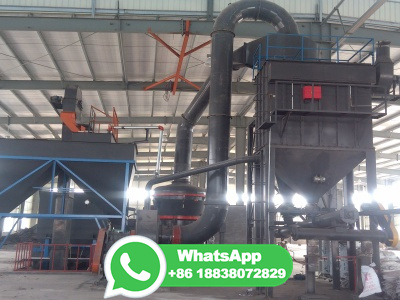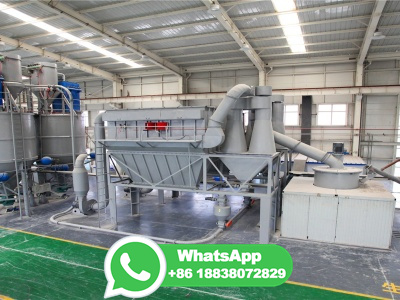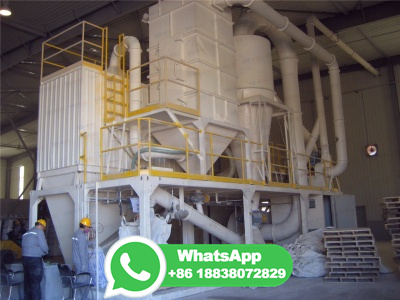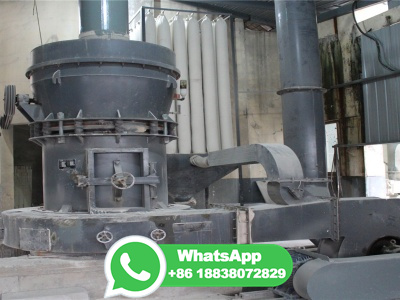
WEBSep 1, 2016 · Iron ore sintering is the process of heating iron ore fines, coke fines, and other materials to produce a semimolten mass that solidifies into porous pieces of sinter with a size and strength suitable for a blast furnace. It is the second most energyconsuming process in steelmaking.
WhatsApp: +86 18203695377
WEBOct 15, 2023 · Abstract. In iron making process, sintering of iron ore fines is an integral step to utilize not only the ore fines but also to introduce a part of flux (limestone and dolomite) along with the sinter in blast furnace burden. In this way, the productivity of the furnace considerably improves. In this paper, some fundamental aspects such as the ...
WhatsApp: +86 18203695377
WEBJul 25, 2016 · 1. Introduction. The integrated iron and steel industry is the most energyintensive sector, accounting for 10–15% of the total energy consumption in the world [1].In 2009, the CO 2 emission from Chinese iron and steel sector is nearly equal to 50% of the world's steel industry's CO 2 emission [2].It is aimed at converting iron ore fines to .
WhatsApp: +86 18203695377
WEBMay 1, 2023 · Through recent studies, it was found that iron ore sintering can be used to treat MSWIFA(Gan et al., 2021). The use area of sintering machines in China has exceeded 160000 square meters, with an annual output of more than 1 billion tons of iron ore sinter, accounting for more than 60% of the global output(Ji et al., 2022).
WhatsApp: +86 18203695377
WEBOne of the most challenging issues of the actual steelmaking industry is the mitigation of CO 2 emissions. To cope with this target, the massive use of granulated biomass and fuel gas in the iron ore sintering process are a promising technological solution and can contribute to mitigating the environmental impacts of the steel plant.
WhatsApp: +86 18203695377
WEBMay 1, 2019 · The iron ore sintering process is an important step in preparing raw material for ironmaking. How to reduce carbon consumption while ensuring the stable running of the sintering process is an ...
WhatsApp: +86 18203695377
WEBAug 19, 2020 · The sintering process can be defined as a thermal agglomeration process that is applied to a mixture of iron ore fines, recycled ironmaking products, fluxes, slagforming agents, and solid fuel (coke) with the objective of obtaining a product with the suitable characteristics (thermal, mechanical, physical, and chemical) to be fed to the .
WhatsApp: +86 18203695377
WEBAug 1, 1990 · In this chapter, the sintering process is first described to identify the key steps of the process, that is, granulation and thermal densifiion. Discussion is then focused on the effect of the chemical, physical, and mineralogical characteristics of iron ore on these steps, and the consequences for sinter quality and sintering performance.
WhatsApp: +86 18203695377
WEBDec 1, 2012 · The iron ore sintering process is a key technology in the steel industry due to its possibility of recycling waste solids or powders internally produced during the raw materials handling or ...
WhatsApp: +86 18203695377
WEBJun 1, 2021 · Recovery of highpurity NO 2 and SO 2 products from ironore sintering flue gas by distillation: process design, optimization and analysis
WhatsApp: +86 18203695377
WEBApr 1, 2020 · The abnormal operating mode of the iron ore sintering process will produce sinter ore with low yield and poor quality. It is of high economic value to ensure that the sintering process runs under ...
WhatsApp: +86 18203695377![[PDF] Sinter strength evaluation using process parameters under ...](/3wa9brv/381.jpg)
WEBJul 25, 2016 · DOI: / Corpus ID: ; Sinter strength evaluation using process parameters under different conditions in iron ore sintering process article{Cheng2016SinterSE, title={Sinter strength evaluation using process parameters under different conditions in iron ore sintering process}, .
WhatsApp: +86 18203695377
WEBAug 24, 2016 · Abstract. Sintering is the most economic and widely used agglomeration process to prepare iron ore fines for blast furnace use. Owing to the depleting reserves of traditional high grade iron ore, there have been considerable changes in iron ore resources available throughout the world, especially in steel mills in East Asia.
WhatsApp: +86 18203695377
WEBMay 1, 2021 · Abstract. Tumble Strength (TS) of iron ore sinter, affected by numerous factors, is considered as a vital performance to assess sinter quality for blast furnace (BF) ironmaking. For the sake of ...
WhatsApp: +86 18203695377
WEBJan 15, 2024 · Discrete element method is used in this work to investigate the sintering granulation process of differentshaped nuclei iron ore particles and different drum baffle settings in rotating results show that the nuclei particle shape does not affect the flow pattern much, and the baffle setting can affect the time needed for particle flow to .
WhatsApp: +86 18203695377
WEBApr 11, 2017 · The mechanism of arsenic removal during a sintering process was investigated through experiments with a sintering pot and arsenicbearing iron ore containing arsenopyrite; the corresponding chemical properties of the sinter were determined by inductively coupled plasma atomic emission spectrometry (ICPAES), X .
WhatsApp: +86 18203695377
WEBSep 1, 2021 · Iron ore sinter is an ordinarily utilized ironbearing burden in BF ironmaking unit. The sintering agglomeration procedure aims to form high strength sinter including granulating of the mixed materials, distributing the granulated materials and then igniting the fuels (coke or coal), sintering the ironbearing materials by the combustion of fuel in a .
WhatsApp: +86 18203695377
WEBAug 16, 2023 · Applying hydrogenrich energy such as natural gas to replace coal/coke in the steel industry can efficiently mitigate CO 2 emissions and accelerate the process of carbon neutrality. Gas injection sintering technology has been widely used in industry for more than ten years, but the replacement ratio of solid fuels by hydrogenrich gas has .
WhatsApp: +86 18203695377
WEBDec 1, 2023 · As a preprocessing of blast furnace ironmaking, the iron ore sintering process accounts for 6–8% of the total energy consumption in the steel industry. About 75–80% of energy consumption is provided by coke, anthracite and other fossil fuels [8]. Using cleaner and more efficient fuels to replace fossil fuels such as coke and anthracite .
WhatsApp: +86 18203695377
WEBDec 1, 2018 · The softmeasuring model of thermal process established is applied in a sintering field of Chinese iron and steel plant. The setting value of TRP, BRP and BTP of the sintering machine was 28 m, 33 m and 39 m respectively, according to the data analysis of exhaust gas temperature in stable sintering state.
WhatsApp: +86 18203695377
WEBSep 1, 2016 · Abstract. Sintering is the most economic and widely used agglomeration process to prepare iron ore fines for blast furnace use. Owing to the depleting reserves of traditional high grade iron ore, there have been considerable changes in iron ore resources available throughout the world, especially in steel mills in East Asia.
WhatsApp: +86 18203695377
WEBJan 1, 2022 · Abstract. Sintering is the most economic and widely used agglomeration process to prepare iron ore fines for blast furnace use. In this chapter, the sintering process is first described to identify the key steps of the process, that is, granulation and thermal densifiion. Discussion is then focused on the effect of the chemical, physical ...
WhatsApp: +86 18203695377
WEBJan 20, 2017 · In the iron ore sintering process, to optimize two key parameters, the burning through points and the bunkerlevel, an multiobjective optimal control method is presented based on fuzzy ...
WhatsApp: +86 18203695377
WEBMay 1, 2017 · Iron ore is the main responsible material for emissions of trace elements during sintering as it undergoes a series of physicochemical transformations throughout the process. In general, trace elements may remain in the solidstate, volatilize during combustion and recondense in the cleaning system, or remaining in the gaseous state .
WhatsApp: +86 18203695377